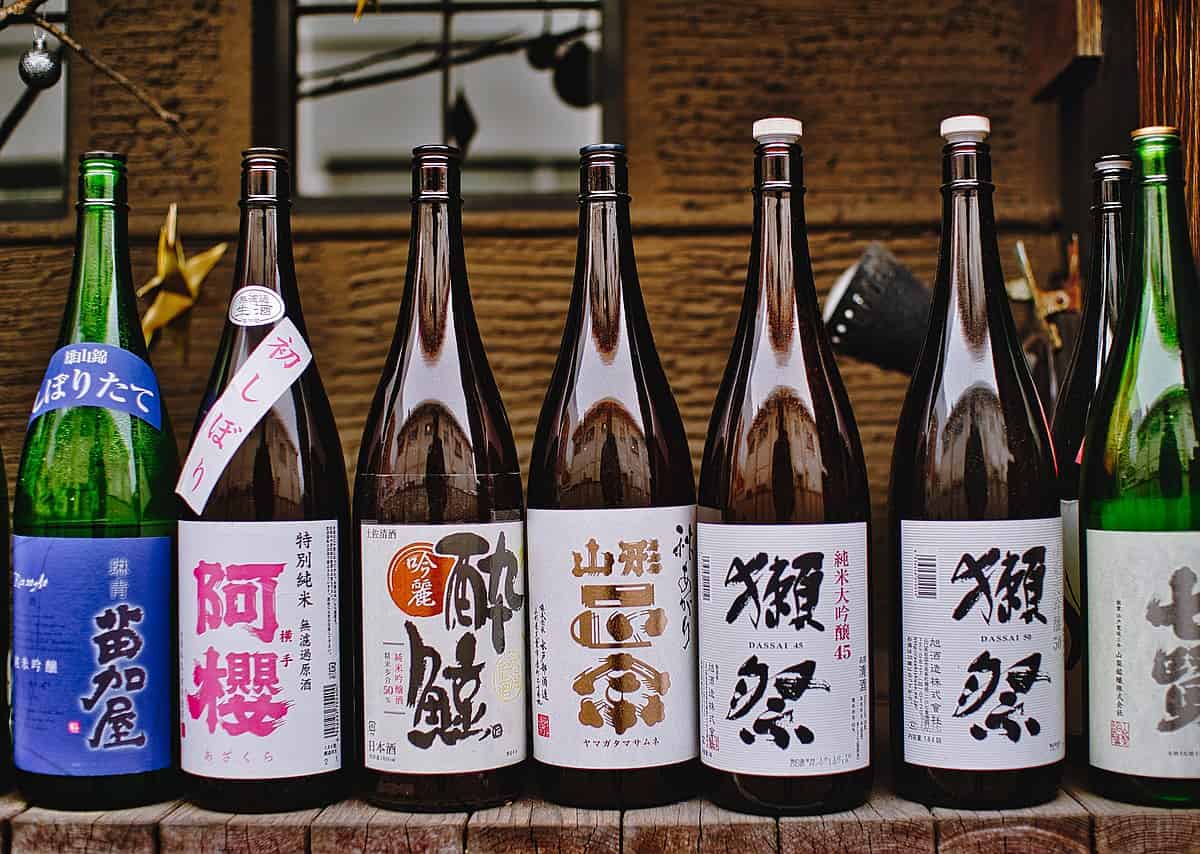Konnichiwa! In this captivating journey through the world of Japanese alcohol, we will unravel the mysteries behind Nihonshu and its intriguing naming conventions. Often referred to as sake outside of Japan, Nihonshu holds a special place in Japanese culture. Let’s embark on this enlightening adventure and gain a deeper understanding of the enigmatic world of Nihonshu.
What is Nihonshu?
Nihonshu, or “Japanese alcohol,” showcases the pinnacle of Japanese brewing traditions. Crafted with utmost precision, this rice-based beverage captivates the senses with its delicate flavors and aromas. The term “Nihonshu” is deeply rooted in the historical and cultural significance of this revered drink.
The name “Nihonshu” derives from the Japanese characters “Nihon” (日本), meaning Japan (land of the rising sun), and “shu” (酒), which translates to alcohol. This naming convention highlights the unique connection between Nihonshu and Japanese culture, emphasizing its position as the nation’s traditional alcoholic beverage.
Nihonshu vs. Sake
It is important to differentiate between Nihonshu and the term “sake” as it is commonly understood outside of Japan. While Nihonshu refers specifically to the rice-based alcoholic beverage, “sake” in Japan encompasses a broader range of alcoholic drinks, including shochu, whiskey, etc. and other traditional spirits.
Nihonshu’s international recognition as “sake” is a testament to its global popularity. The misnomer originated from the historical context in which Japan’s traditional drink was introduced to the West. However, understanding the nuanced differences and using the correct terminology allows us to appreciate the unique qualities and cultural significance of Nihonshu.
Nihonshu: A Taste of Tradition
Delving deeper into the world of Nihonshu, we are captivated by its intricate brewing process, resulting in a vast array of flavors and textures. The combination of rice, water, yeast, and koji mold creates a delicate balance that embodies the essence of Japanese craftsmanship.
Nihonshu’s Brewing Process: Nihonshu’s distinctive brewing process, known as “multiple parallel fermentation,” is the key to its complex flavors. The rice starch is converted into sugars by the koji mold, while yeast then ferments these sugars into alcohol. This dual fermentation process contributes to the nuanced taste profiles and aromatic qualities found in Nihonshu.
Nihonshu’s Flavor Profiles: The flavor profiles of Nihonshu vary widely, ranging from dry and crisp to rich and sweet. Factors such as the type of rice used, the brewing techniques employed, and the region of production all contribute to the unique characteristics of each Nihonshu variety. Some may exhibit subtle floral notes, while others boast a robust umami flavor. The careful balance of acidity, sweetness, and alcohol content creates a harmonious and refined drinking experience.
Nihonshu and Food Pairings: One of the delights of Nihonshu lies in its ability to complement a wide range of cuisines. The delicate flavors and clean finish of certain Nihonshu varieties make them a perfect match for traditional Japanese dishes such as sushi, sashimi, and tempura. Additionally, the umami-rich Nihonshu varieties can enhance the flavors of grilled meats, seafood, and even cheese. The versatility of Nihonshu allows for endless possibilities in creating memorable food and drink pairings.
Nihonshu and Japanese Traditions: Nihonshu has been an integral part of Japanese culture for centuries. It is often featured in traditional ceremonies and rituals, symbolizing purity, hospitality, and harmony. The meticulous brewing process and the reverence given to the ingredients demonstrate the deep respect for nature and the desire to capture its essence in every sip.
Nihonshu’s Global Influence: Nihonshu’s reach extends far beyond the borders of Japan, as it has gained popularity and recognition around the world. Its unique flavors and cultural significance have captivated the palates of enthusiasts and connoisseurs alike. As more people discover the intricacies of Nihonshu, its global presence continues to grow, fostering a deeper appreciation for Japanese traditions and craftsmanship. If you are visiting Japan and interested to have a first hand guided Nihonshu experience, check out the various pub crawling tours provided by Magical Trip.
Summary
Nihonshu stands as a shining example of Japan’s rich cultural heritage and craftsmanship. The name “Nihonshu” reflects its deep connection to Japanese culture and serves as a reminder of the meticulous brewing techniques and traditions that have been passed down through generations.
What is Nihonshu? While the term “sake” is commonly used to refer to Nihonshu outside of Japan, it is crucial to understand that Nihonshu represents a specific category within this diverse realm and “Sake” in Japan refers to all types of alcohol.
So, whether you refer to it as Nihonshu or sake, let us raise our glasses in celebration of this remarkable elixir. Let its delicate flavors and rich history transport us to the heart of Japanese craftsmanship, as we honor the traditions that have shaped this extraordinary beverage. Kampai to the enduring legacy of Nihonshu and its enduring place in the tapestry of Japanese culture!

